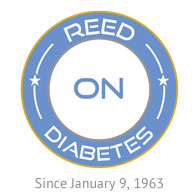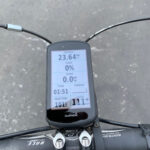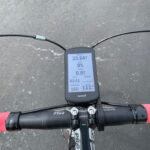I started cycling in 2007 after a JDRF staff member asked me to be our chapter’s first type 1 to ride a JDRF sponsored century. I was also in search of a low impact workout as a substitute for high impact running. I hadn’t been on a bike since college, but trained and completed that century in Whitefish, Montana. I have continued to ride as I find it mindful and social while burning calories. It has aerobic and anaerobic benefits and there is something about the experience of riding that you don’t get in other workouts. The things you see, the way you see them, and the way you feel when cycling – apparently there are laws of physics we experience when moving with pace around a corner!
Over the past 15 years I’ve figured out how to ride with diabetes by trial and error. Blood meters and continuous glucose monitors (CGMs) have helped, but I’d look at them during rest stops. And that wasn’t always good news. Like the time the start to the JDRF Ride in Amelia Island was so slow through the first SAG (support and gear) stop that my pre ride carb load resulted in a blood sugar of 375. And there was a training ride with another type 1 when I was asked to pick up the pace. I thought my effort was good only to pull over and discover that my blood sugar was 32. Not good.
So how about this past weekend when I was able to load the Dexcom app on my Garmin cycling computer (**). (A cycling computer is placed on handle bars so a cyclist can view real time data.) But now in addition to speed, mileage, grade, cadence and heart rate, it now also shows my CGM data in the lower right hand corner:
Never in my wildest dreams did I imagine real time blood sugar data and trends would be visible during rides. Not only is it uber cool (*), but the confidence it provides is a difference maker while cycling. My mind is more into the ride and less wondering about my blood sugar. In group rides I feel more connected to other riders. I fuel better.
The innovation in our tools and tech are moving at a rapid pace and I’m grateful for the development teams at Dexcom and Garmin for making CGM data present during cycling.
(*) To talk about blood sugar data being cool is quite a statement.
(**) The app can be a bit temperamental, but a friend with type 1 that works at Garmin said to keep both the Garmin Connect and Dexcom apps open when riding … that has worked nicely. Here’s a link with instructions on how to load the Dexcom app on your Garmin device: https://support.garmin.com/en-US/?faq=3HkHX1wT6U7TeNB7YHfiT7



